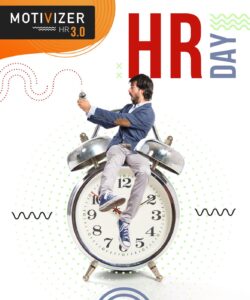Implementation of Cafeteria System: Coding or Configuration?

Motivizer is a dynamic cafeteria platform for building applications with an emphasis on configuration, rather than coding. Traditional methods of building cafeteria applications using custom code were challenging, labor-intensive, expensive, and time-consuming. When the applications are built, they often prove to be unstable and difficult to adapt to changing business requirements in practice. With the Motivizer system, IT professionals can easily configure applications to suit the type of information, processes, and events relevant to specific business activities within the HR department. Additionally, the service-oriented architecture enables easy integration with existing applications and internal and external systems, creating new opportunities and increasing investment profitability. As a design platform, Motivizer provides reusable components, model-based configurations, configurable user interface, and control tools, sample applications, and guidelines and procedures that enable programmers and system architects to quickly design and modify applications using graphical tools.

The Motivizer Cafeteria Platform minimizes the time required to create applications, enabling business users to build information flow systems and other advanced logical structures with ease. The user is provided with a graphical configuration environment with ready-made, easily modifiable templates for defining process elements. Furthermore, the designer can easily configure process elements such as simple manual tasks, large task queues, automated content management, and advanced system integration processes, all through simple to use visual tools. Using standard process templates increases productivity and achieves greater standardization through the reusability of components in multiple applications.
Process designers can freely collaborate with those responsible for organizing or managing
business processes to generate process maps, multi-dimensional process views,
reports, and analysis. They can also configure the process elements with ease, including simple manual tasks, large task queues, automated content management, and advanced system integration processes, all through simple to use visual tools. The use of standard process templates increases productivity and achieves greater standardization through the reusability of components in multiple applications.
In addition, Motivizer includes compositional tools that allow you to easily and quickly obtain a user-tailored visual-functional effect that will best suit the intended use. Processes, content, monitoring and administrative functions are consolidated in the form of a comprehensive and easily configurable user interface. Programmers, system architects and business analysts can quickly create and deploy intuitive applications tailored to individual functions in accordance with process requirements.
The Motivizer Cafeteria Platform sets a new standard for fast application building by providing a highly functional, integrated design platform with the following features:
- Template Configuration – Using predefined process models and repeatable task templates to configure information flow systems that are the key components of an application.
- Configurable User Interface – Freedom to design optimal user interfaces for each inference application using the “point and click” method and reusable components.
- Role-based Applications – Quick configuration of user interfaces and functionality based on user roles.
- Configurable Control Panels – Graphic creation of control panels without programming enables real-time processes.
- Unification of Processes and Content – Developing applications that combine processes, documents, forms, and control panels into a single user interface.
- Rich Integration Capabilities – Integration of cafeteria processes, content, and services with other systems such as CRM, ERP.
- Sample Applications – Creating and optimizing cafeteria applications based on ready-made patterns.
- Proven Practices – Easy determination of the optimal method for creating the most efficient solution in a given area of application..

